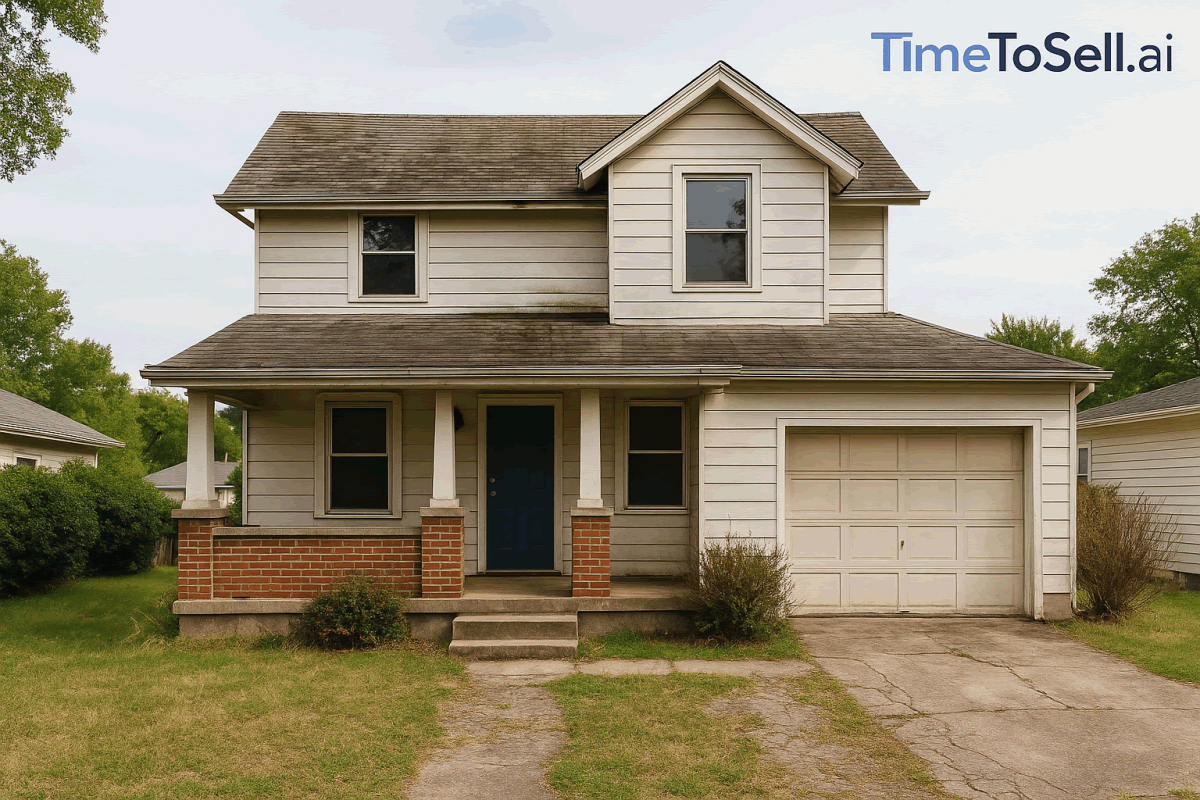A Personal Note from Your AI Asset Analyst: The data signature of your property indicates a potential financial anomaly where the value of the land may have significantly surpassed the value of the structure itself. This is not a flaw; it is a significant financial opportunity. This document provides a confidential, institutional-grade framework for analyzing this situation to empower you to make a fully informed, strategic decision about your asset.
1. The Core Concept: When a House is No Longer a Home, But a Placeholder for Value
In the lifecycle of a neighborhood, a fascinating financial event can occur. Decades of growth, changing zoning laws, and evolving buyer preferences can cause the value of the land beneath a house to appreciate far more rapidly than the house itself. At a certain point, a property reaches an inflection point where its “highest and best use” is no longer the existing structure, but the potential for new construction.
This creates what is known in the industry as a "Teardown Prospect." The term may sound harsh, but it is a purely financial designation that signals a powerful opportunity. It means a homeowner may be sitting on a hidden windfall, where their property is worth significantly more to a builder or developer than it is to a traditional family looking for a move-in ready home.
Understanding this concept is the first step to unlocking a level of value that most homeowners don’t know they have.
2. The Data Signals: How to Identify a Land-Value Opportunity
Predictive analytics models are designed to spot these opportunities by detecting a specific synergy of data points. These are the key indicators that an asset’s value has shifted from the structure to the land.
- High Land-to-Improvement Value Ratio: The most direct signal, found in county assessor data. When the assessed value of the land accounts for 50% or more of the total property value, it’s a strong indicator that the structure is no longer the primary driver of value.
- Property Obsolescence: This is a combination of age (typically 50+ years) and a low condition grade from the assessor. It signals a structure with significant deferred maintenance or a functionally obsolete layout (e.g., small rooms, low ceilings, few bathrooms).
- Lot Size & Zoning: The property sits on a lot that is unusually large for the neighborhood, or it is in an area that has seen a favorable up-zoning, allowing for greater density (e.g., the ability to build a duplex or an ADU). This is a core concept from the playbook on How Zoning Changes Create Surprise Listings.
- Hyper-Local Market Activity: The AI detects a pattern of recent sales in the immediate vicinity to developers, or sales of new construction homes at very high prices. This confirms there is an active, profitable market for redevelopment in your specific micro-market, a key principle from Mastering Micro-Markets.
When these factors converge, the property is no longer just a home; it is a strategic land asset.
3. The Financial Framework: The "Two-Path Valuation Memo"
To understand the true scale of the opportunity, you must value the property in two different ways. This is a framework used by professional developers and is essential for your decision-making.
Path A: The Traditional Resale Valuation
This is the standard Comparative Market Analysis (CMA) that determines what your home is worth in its current condition to a traditional homebuyer. It is based on the sale prices of similar existing homes in your area. This path often requires some level of preparation (painting, repairs) to be competitive on the open market.
Path B: The Land-Value (or Developer) Valuation
This is a more complex calculation based on the principle of "residual land value." A developer analyzes it as follows:
(Future Sale Price of New Home) - (Construction Costs) - (Soft Costs & Fees) - (Developer's Required Profit) = Maximum Land Offer
- Future Sale Price: What a brand-new, modern home would sell for on your lot.
- Construction Costs: The hard costs to build that new home (materials, labor).
- Soft Costs & Fees: Costs for demolition, permits, architectural plans, and financing.
- Developer’s Profit: A required margin, typically 15-20% of the final sale price.
The number that remains is the maximum a developer can rationally pay for your land. In a strong market, this number can be significantly higher than the Traditional Resale Value. For a deeper understanding of this financial modeling, the Equity Math That Converts guide provides a robust framework.
4. The Process: How a Sale to a Builder or Developer Works
Selling a property for its land value is a different type of transaction than a traditional home sale. It is a B2B (business-to-business) transaction with its own process and expectations.
- The Offer: Offers are typically all-cash and may come with a longer due diligence or inspection period (30-90 days). This allows the builder to conduct feasibility studies, soil tests, and confirm zoning and permitting requirements.
- "As-Is" Condition: The sale is almost always in "as-is" condition. The builder has no interest in your kitchen countertops or the age of your water heater, because the entire structure will be demolished. You are not required to make any repairs.
- Fewer Contingencies: The offer will likely not have a financing or appraisal contingency in the traditional sense. The primary contingency is the feasibility study.
- Flexibility: Builders can often offer flexible closing dates or even a rent-back agreement that allows you to stay in the home for a period after closing, giving you ample time to plan your next move.
The key to a successful outcome is having a professional advisor who speaks the language of developers and can negotiate not just on price, but on terms that protect your interests, a concept familiar to those who have navigated the Investor Exit Wave.
5. The Strategic Decision: Analyzing the Opportunity
With a clear understanding of the two valuation paths, you can make a strategic decision. Ask yourself:
- Which path offers the highest net proceeds after all costs are considered?
- Which path offers the most certainty and the least amount of stress? (Selling as-is avoids the need for any repairs or staging).
- What is the risk of waiting? In a hot market, development values can rise. In a cooling market, builders become more cautious, and the premium they are willing to pay may decrease.
Your Action Item: The first step is to get the data. Your confidential TimeToSell.AI dashboard provides the initial valuation data needed to model both the Traditional Resale and the potential Land-Value paths. This is the starting point for a serious financial analysis.
A Final Word: Your property may be more than a home; it may be a significant and under-leveraged financial asset. Understanding its value as a redevelopment opportunity is the first step to making a powerful and potentially life-changing financial decision. By approaching this with a clear, data-driven framework, you can ensure that you are maximizing the true value of your asset.
To begin your strategic analysis, access your complimentary TimeToSell.AI dashboard. It provides the initial property and market data needed to start a conversation about your home's highest and best use.





